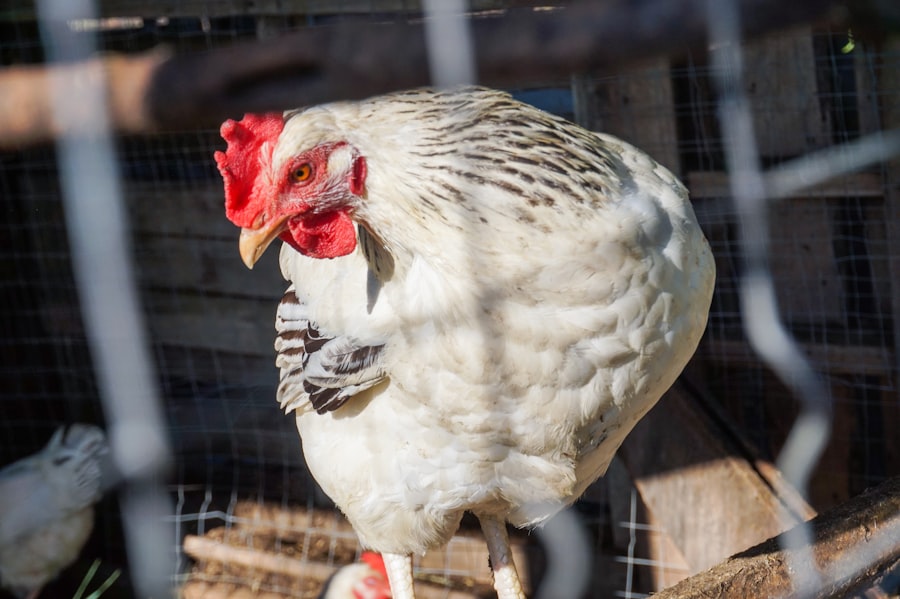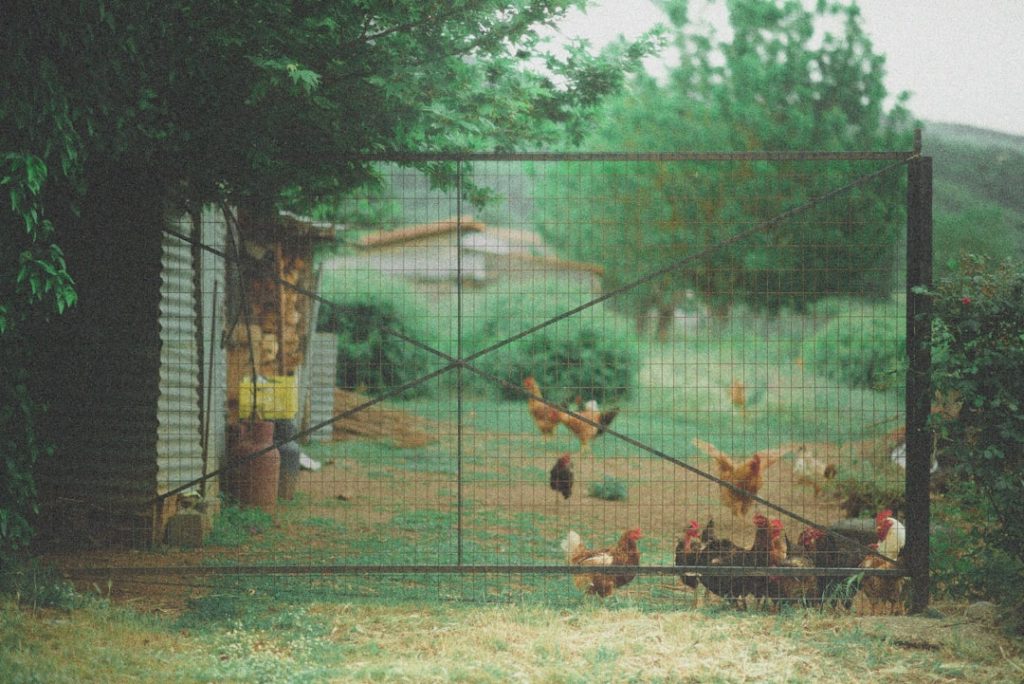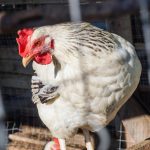Frostbite is a condition that occurs when the skin and underlying tissues freeze due to exposure to cold temperatures. In chickens, frostbite most commonly affects the comb, wattles, and feet. When the temperature drops below freezing, the blood vessels in these areas constrict in an attempt to conserve heat, which can lead to tissue damage and cell death.
The severity of frostbite can range from mild to severe, depending on the duration of exposure and the temperature. Mild cases may result in redness and swelling, while severe cases can cause blackened, necrotic tissue that may require amputation. Frostbite in chickens can be particularly problematic because they are not able to seek shelter or warmth on their own.
Unlike other animals, chickens do not have the ability to regulate their body temperature as effectively, making them more susceptible to cold-related injuries. Additionally, certain breeds of chickens with large combs and wattles are at a higher risk for frostbite. It is important for chicken owners to be aware of the signs of frostbite and take proactive measures to prevent it from occurring in their flock.
Table of Contents
Key Takeaways
- Frostbite in chickens can occur when their combs, wattles, and feet are exposed to freezing temperatures for extended periods.
- Adequate shelter and insulation, such as draft-free coops and straw bedding, can help protect chickens from frostbite.
- Proper ventilation is important to prevent moisture buildup in the coop, which can increase the risk of frostbite.
- Providing warm and dry bedding, such as straw or wood shavings, can help chickens stay comfortable and prevent frostbite.
- Access to fresh water is crucial for chickens, as dehydration can increase the risk of frostbite. Regularly check water sources for freezing.
- Monitor chickens for signs of frostbite, such as discoloration or swelling, and seek veterinary care for severe cases.
Providing Adequate Shelter and Insulation
Providing Adequate Shelter
One of the most important steps in preventing frostbite in chickens is to provide them with adequate shelter and insulation. This can be achieved by ensuring that the chicken coop is well-constructed and free from drafts.
Insulating the Coop
The coop should be insulated with materials such as straw or hay to help retain heat and keep the interior temperature stable. This will help to keep your chickens warm and cozy during the cold winter months.
Preventing Overcrowding and Providing Outdoor Shelter
Additionally, it is important to make sure that the coop is not overcrowded, as this can lead to increased moisture and humidity, which can exacerbate the risk of frostbite. In addition to providing a well-insulated coop, it is also important to provide outdoor shelter for chickens to seek refuge from harsh weather conditions. This can be in the form of a covered run or a windbreak to protect them from cold winds and precipitation.
By providing adequate shelter and insulation, chicken owners can help minimize the risk of frostbite and ensure the well-being of their flock during the winter months.
Maintaining Proper Ventilation

While it is important to provide adequate insulation to protect chickens from the cold, it is equally important to maintain proper ventilation in the coop. Poor ventilation can lead to increased moisture and humidity, which can create a breeding ground for bacteria and increase the risk of frostbite. To prevent this, chicken owners should ensure that the coop has proper ventilation to allow for air circulation without creating drafts.
Proper ventilation can be achieved by installing vents or windows in the coop that can be opened and closed as needed. This will allow for fresh air to enter the coop while preventing the buildup of moisture. Additionally, it is important to regularly clean the coop to remove any excess moisture or droppings that can contribute to poor air quality.
By maintaining proper ventilation, chicken owners can help reduce the risk of frostbite and create a healthier environment for their flock.
Providing Warm and Dry Bedding
In addition to providing adequate shelter and ventilation, it is important to provide chickens with warm and dry bedding to help protect them from the cold. Bedding materials such as straw, hay, or wood shavings can help insulate the coop and provide a comfortable surface for chickens to rest on. It is important to regularly clean and replace bedding to prevent the buildup of moisture, which can increase the risk of frostbite.
In colder climates, it may be necessary to provide additional heat sources such as heat lamps or heated pads to keep the coop warm. However, it is important to use caution when using heat sources, as they can pose a fire hazard if not properly monitored. It is also important to ensure that heat sources are positioned safely away from bedding and other flammable materials.
By providing warm and dry bedding, chicken owners can help keep their flock comfortable and reduce the risk of frostbite during cold weather.
Ensuring Access to Fresh Water
During the winter months, it is important to ensure that chickens have access to fresh water at all times. Dehydration can increase the risk of frostbite, as it can lead to reduced blood flow and decreased circulation in extremities. To prevent water from freezing, it is important to use heated waterers or regularly check and replace frozen water throughout the day.
In addition to providing access to fresh water, it is important to monitor the temperature of the water to prevent it from becoming too cold. Cold water can lower the core body temperature of chickens, making them more susceptible to cold-related injuries such as frostbite. By ensuring access to fresh, unfrozen water, chicken owners can help maintain the health and well-being of their flock during the winter months.
Monitoring for Signs of Frostbite

Physical Signs of Frostbite
Common signs of frostbite in chickens include redness, swelling, and discoloration of the comb, wattles, or feet. In severe cases, affected areas may become blackened or necrotic, indicating tissue damage and cell death.
Behavioral Changes
In addition to physical signs, chickens with frostbite may exhibit behavioral changes such as lethargy or reluctance to move.
Importance of Early Detection
It is essential to carefully inspect each chicken for signs of frostbite and take immediate action if any symptoms are observed. By monitoring for signs of frostbite, chicken owners can identify and address potential issues before they escalate into more serious problems.
Consulting a Veterinarian for Severe Cases
In cases of severe frostbite, it is important to consult a veterinarian for proper diagnosis and treatment. Severe frostbite can lead to tissue necrosis and infection, which may require medical intervention such as antibiotics or surgical amputation. A veterinarian can assess the extent of the frostbite and provide appropriate treatment options based on the severity of the condition.
In addition to treatment, a veterinarian can also provide guidance on how to prevent future cases of frostbite in the flock. This may include recommendations for adjusting housing conditions, providing additional heat sources, or making dietary changes to support overall health and immunity. By consulting a veterinarian for severe cases of frostbite, chicken owners can ensure that their flock receives the necessary care and support for a full recovery.
In conclusion, frostbite is a serious concern for chickens during the winter months, but with proper care and attention, it can be prevented. By understanding the causes and symptoms of frostbite, providing adequate shelter and insulation, maintaining proper ventilation, providing warm and dry bedding, ensuring access to fresh water, monitoring for signs of frostbite, and consulting a veterinarian for severe cases, chicken owners can help protect their flock from cold-related injuries and ensure their well-being throughout the winter season.
If you’re looking for more tips on keeping your chickens safe and healthy during the winter, check out this article on how to insulate a chicken coop. Insulating your coop can help prevent frostbite and keep your chickens warm and comfortable during the colder months.
FAQs
What is frostbite in chickens?
Frostbite in chickens occurs when the comb, wattles, and feet are exposed to freezing temperatures for an extended period of time, causing the tissue to freeze and potentially die.
What are the signs of frostbite in chickens?
Signs of frostbite in chickens include discoloration of the comb, wattles, or feet, swelling, and the affected areas feeling cold to the touch.
How can I prevent frostbite in my chickens?
To prevent frostbite in chickens, provide a draft-free and well-ventilated coop, use bedding to insulate the floor, and consider using a heat source such as a heat lamp or heated waterer. Additionally, applying petroleum jelly to the comb and wattles can provide a protective barrier against the cold.
What should I do if my chickens have frostbite?
If your chickens have frostbite, move them to a warmer area, gently clean the affected areas with warm water, and apply aloe vera or a veterinary-recommended ointment to promote healing. In severe cases, consult a veterinarian for further treatment.
At what temperature do chickens get frostbite?
Chickens are at risk of getting frostbite when temperatures drop below freezing, especially if there is high humidity or wind chill. It’s important to monitor weather conditions and take precautions to protect your chickens from the cold.
Meet Walter, the feathered-friend fanatic of Florida! Nestled in the sunshine state, Walter struts through life with his feathered companions, clucking his way to happiness. With a coop that’s fancier than a five-star hotel, he’s the Don Juan of the chicken world. When he’s not teaching his hens to do the cha-cha, you’ll find him in a heated debate with his prized rooster, Sir Clucks-a-Lot. Walter’s poultry passion is no yolk; he’s the sunny-side-up guy you never knew you needed in your flock of friends!







